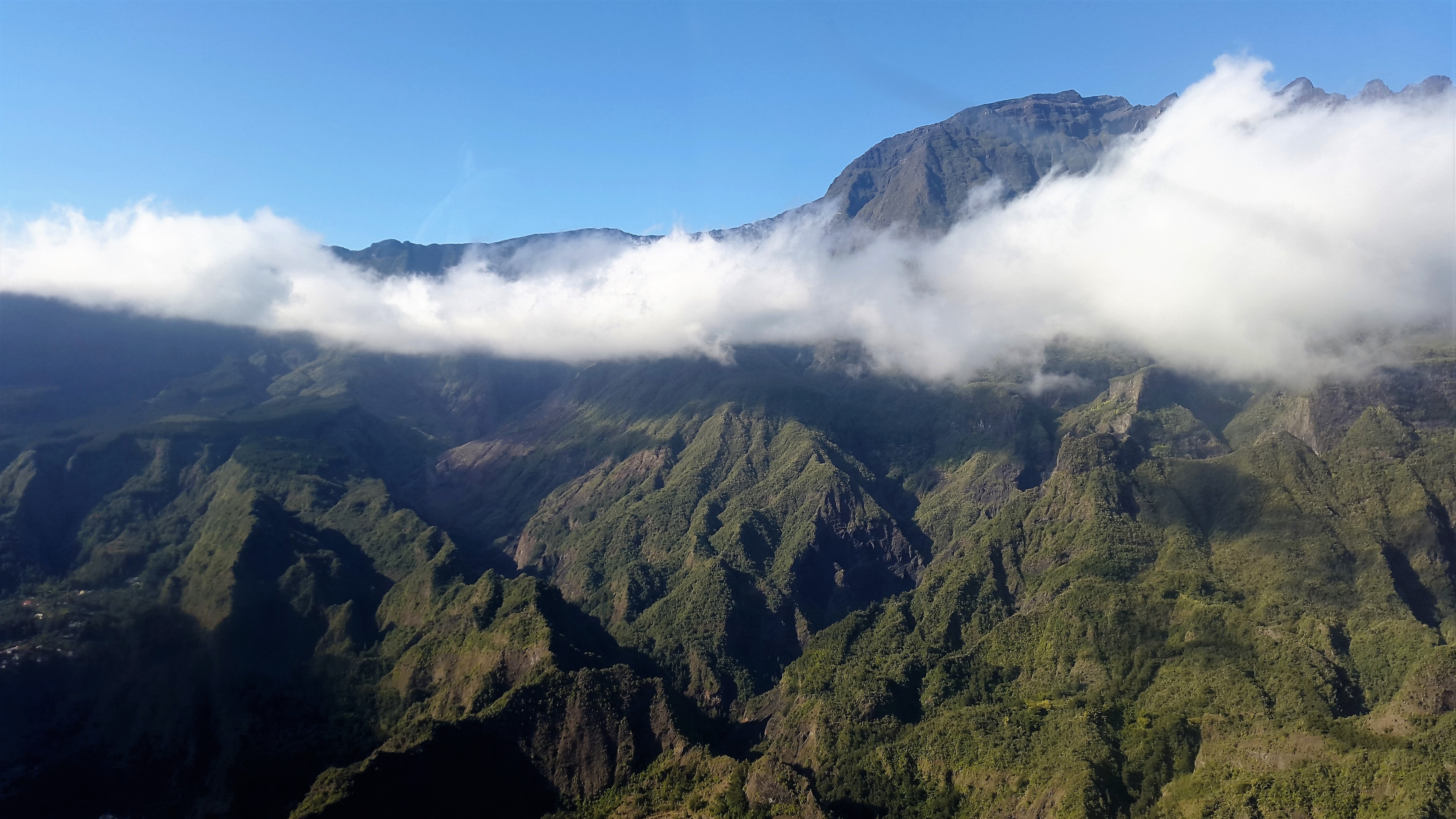Whilst not essentially a part of Africa, it’s location in the Indian Ocean and its African roots qualify it for inclusion. The island of Reunion was birthed a relatively short 3-million odd years ago through a series of volcanic eruptions, and to this day the island continues this tendency and is home to the world’s most active volcano, the Piton de la Fournaise. Most would live in fear of dwelling in such close proximity to an active volcano, but here locals refer fondly to her as le volcan, much as one would a favourite aunt… perhaps because they are predictable, and somewhat relaxed.
1 Take a Helicopter flip over the Cirque de Mafate and Piton de la Fournaise
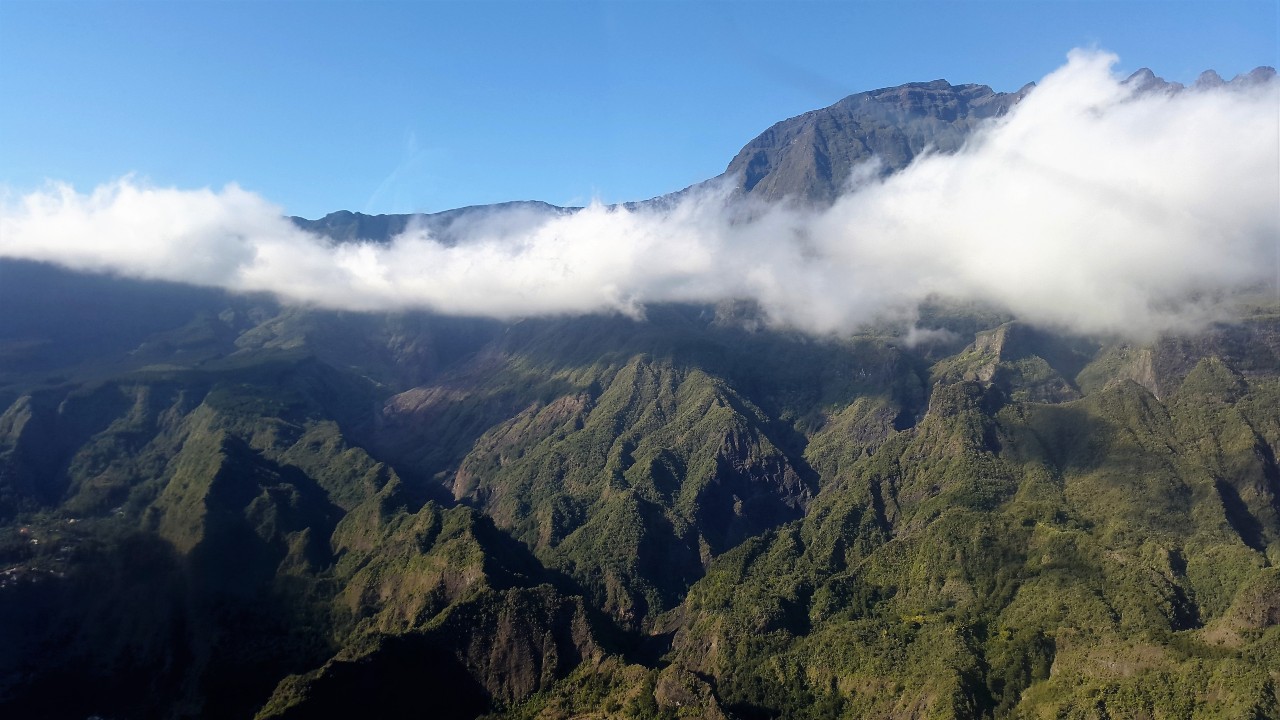
No visit to Reunion Island would be complete without a volcanic experience, and the best way to start, albeit a tad costly, is with a scenic helicopter flight. Our tour began at the Heliganon base in L’Eperon in Saint Gilles… boarding pass in hand and weight assessed (yep, size does matter), the safety instructions began.
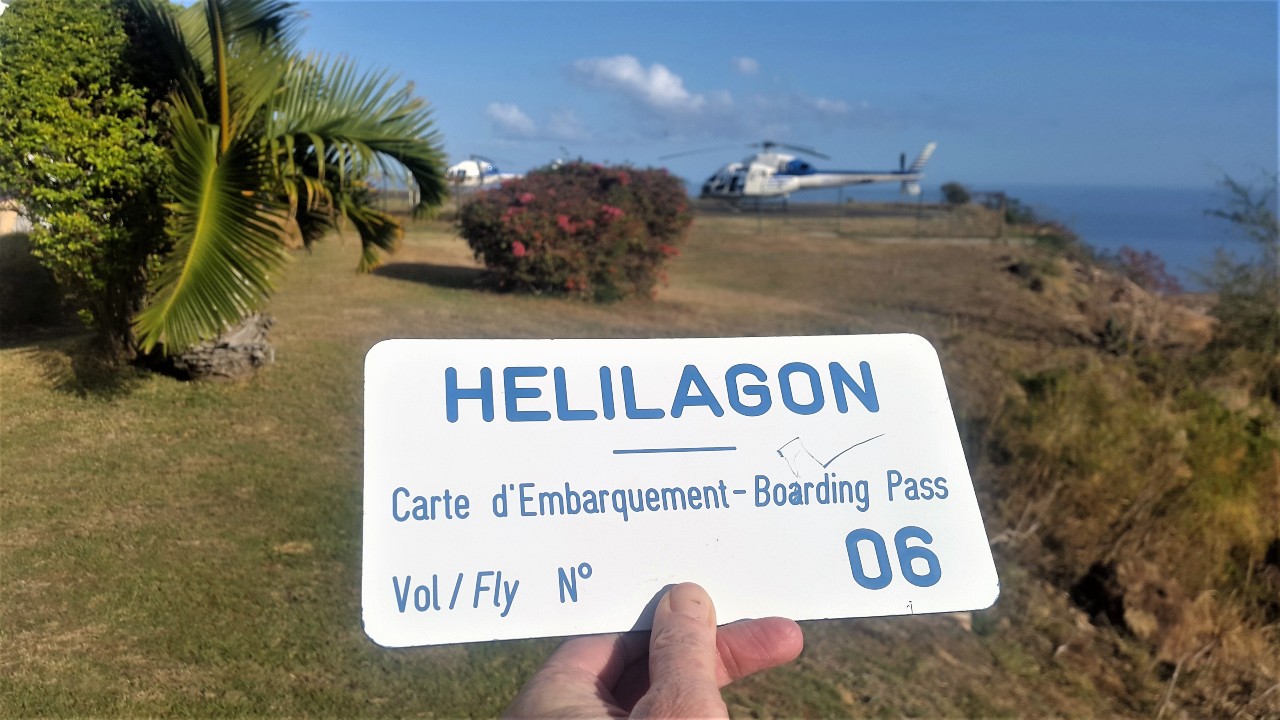
Soon the whop, whop, whop of the rotors increased, and we slowly rose – that was the only ‘slow’ thing about this, from there onwards it was excitement and awe all the way. Rolling hills and sandy beaches gave way to rugged volcanic mountains and verdant valleys as we descended into the Cirque de Mafate, one of three cirques formed by the Piton des Neiges – the now extinct volcano that gave birth to Reunion Island. Tiny hamlets dotted the valley, which is only accessible on foot or by helicopter; this wild and rugged cirque is a favourite with hikers and mountain bikers who revel in both the adventure and the dramatic landscapes these natural amphitheaters create.
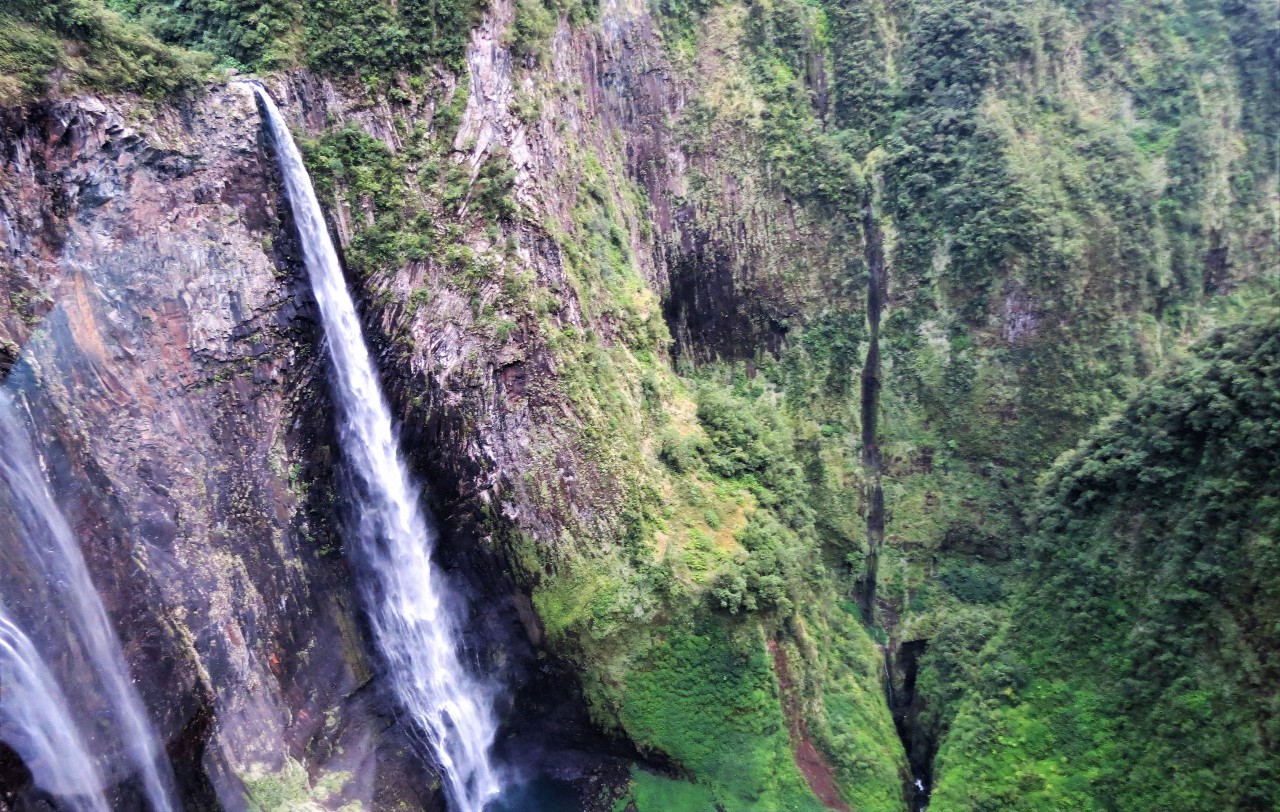
Our skilled pilot Pierre flew us breathtakingly close to the cascading waterfalls of the Le Trou de Fer, or Iron Hole, – twice. The main waterfall of the Le Trou de Fer, that of the Bras de Caverne River, plunges a dizzying 300m over the canyon edge and is joined by at least six others – smaller, but no less spectacular. The cascading rivers and thick green foliage of the cirques soon gave way to the moonscape surrounds of the Piton de la Fournaise.

The Piton de la Fournaise, meaning ‘Peak of the Furnase’, is on the eastern end of Reunion Island and rises an impressive 2,630 meters above sea level. Seeing this sleeping giant and barren landscape from the air makes one realise the incredible power and might of nature; there had been an eruption a week earlier, but all that remained was a smouldering crater.
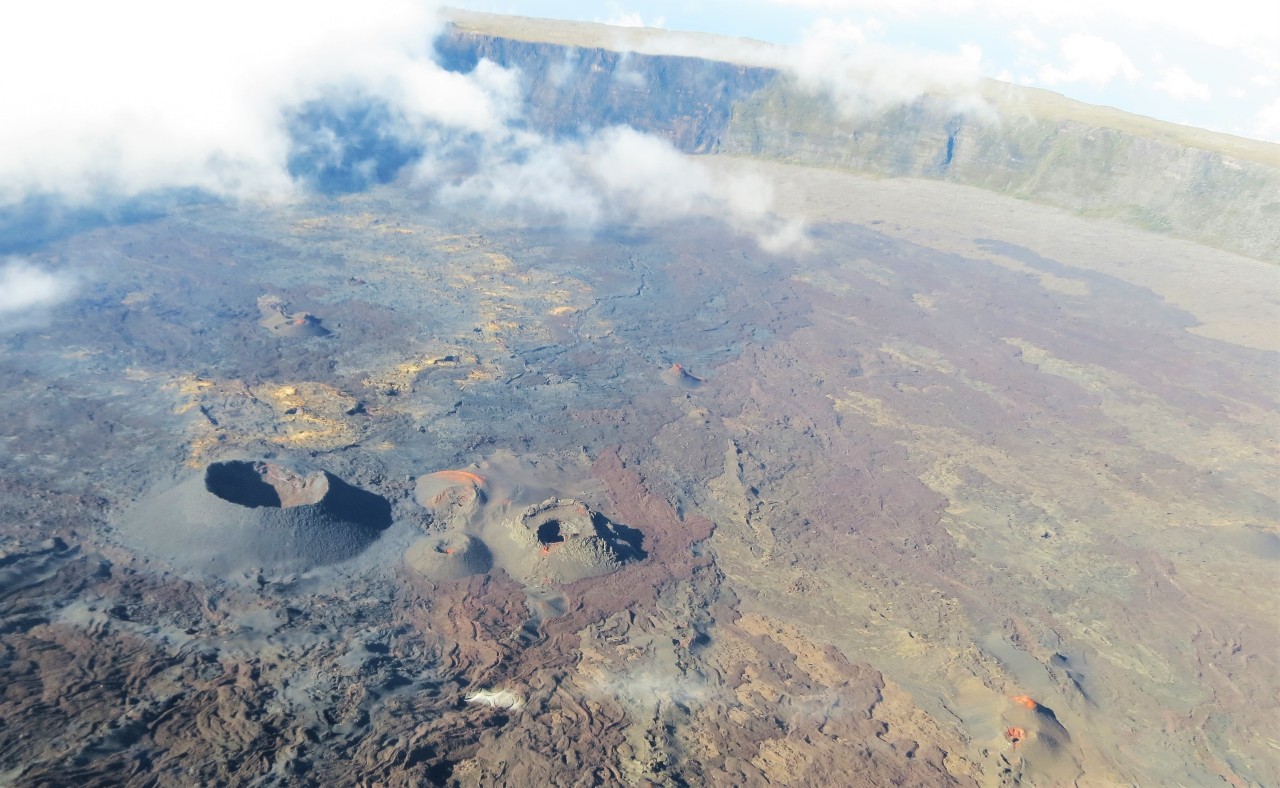
A number of smaller volcanic craters lie within the caldera, with Formica Leo, so named for being similar in shape to the pitfall built by an antlion, being accessible from the view site.
2 Visit the Piton de la Fournaise
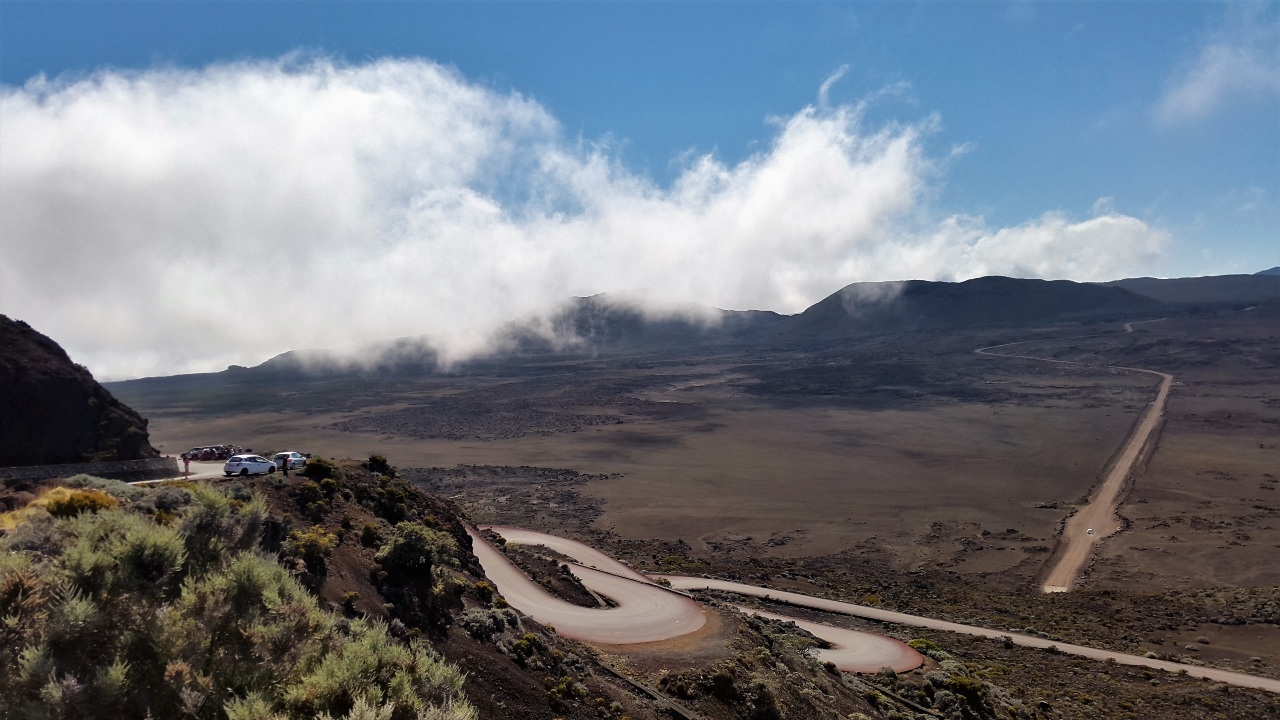
Driving the Route du Volcan is spectacular and takes you through agricultural farmland in the lower valley, lush vegetation and spectacular views as you climb higher, and finally low growing mountainous scrub that as you crest the ridge, gives way to the desolate red landscape of the Plaine des Sables and the Piton de la Fournaise viewpoint.

A hike to Formica Leo would have been a highlight on our itinerary, but we had to be satisfied with seeing her from afar as the hiking trail was closed due to the recent volcanic activity (just one of the reasons I have to go back!).
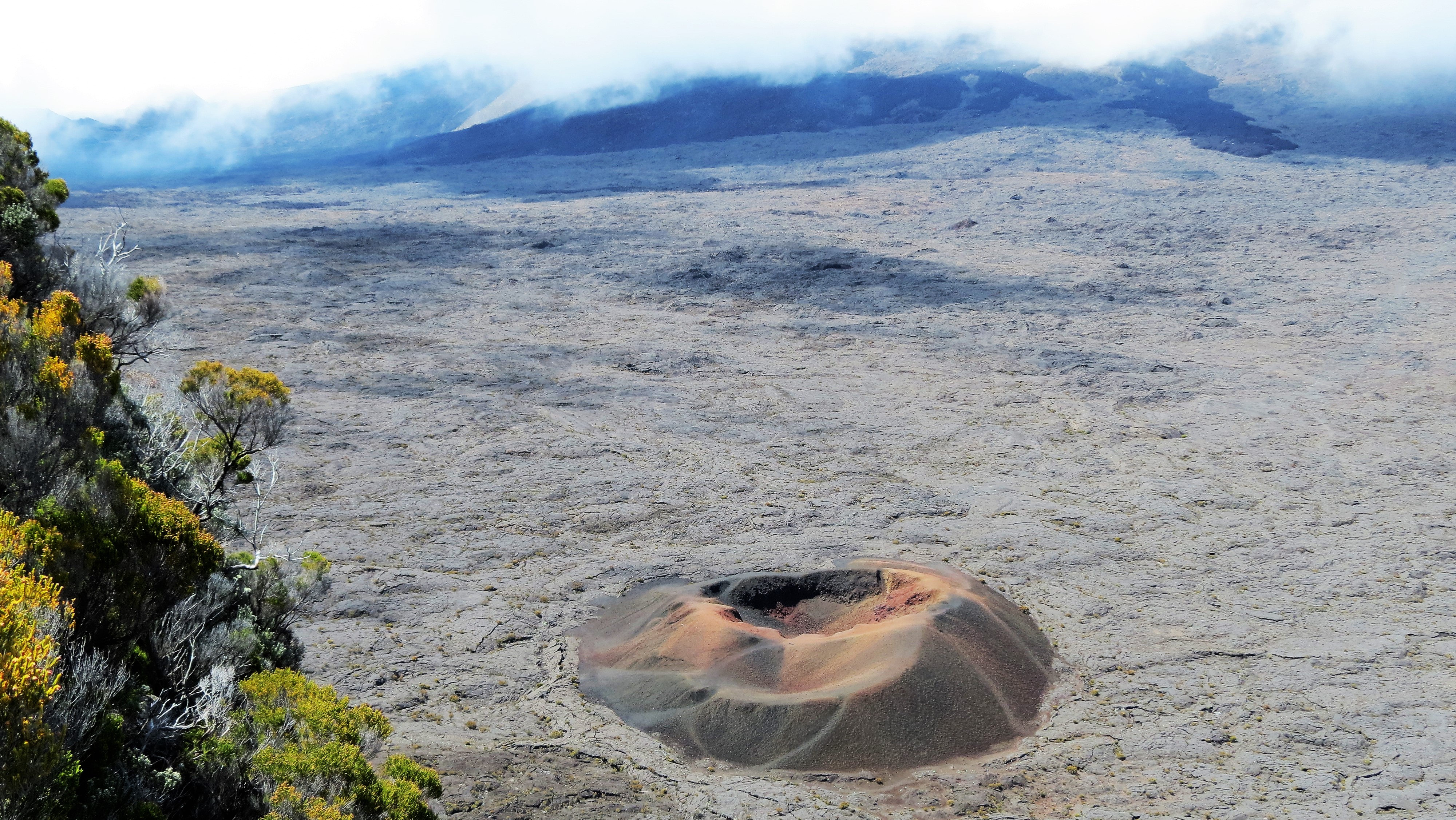
The vista from the viewpoint is impressive, sparse vegetation of ferns and lichen reclaiming the landscape above caldera.
3 Visit the Cité du Volcan Museum
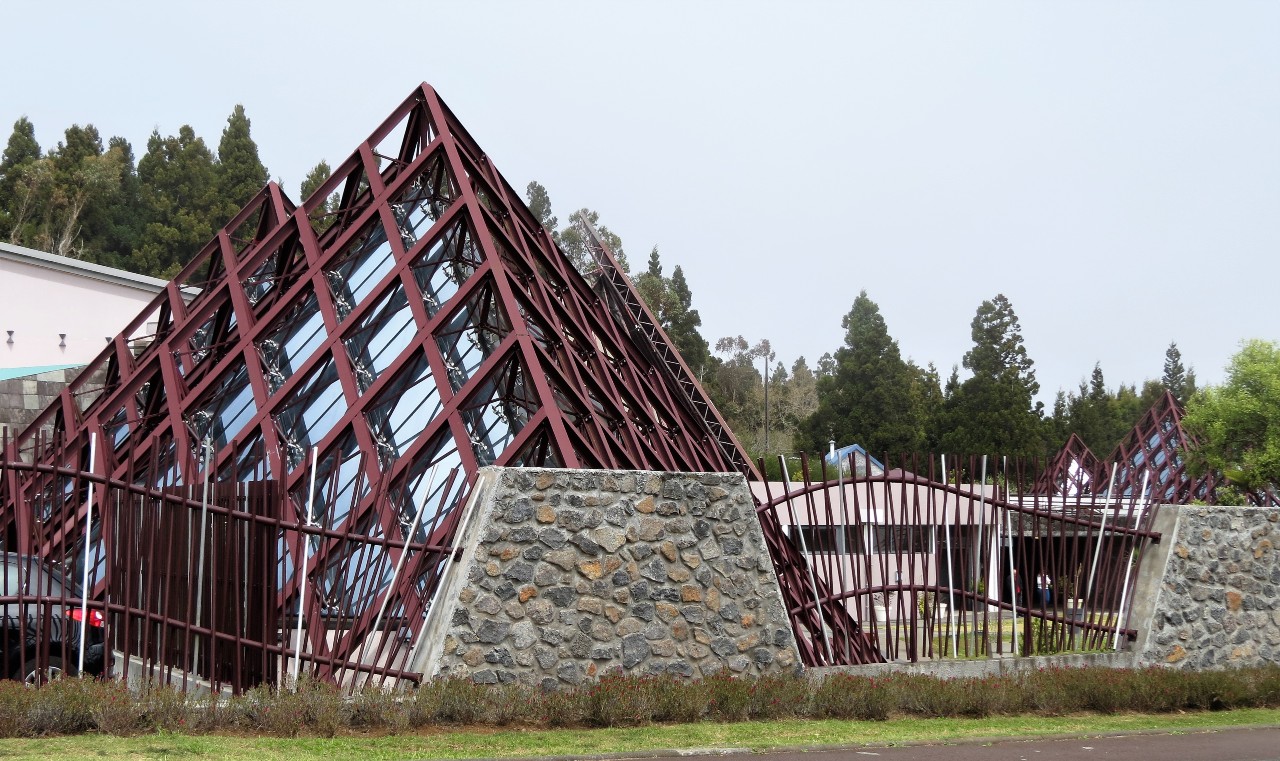
If you have the chance, be sure to pop into the fun and educational Cité du Volcan Museum located in La Plaine des Cafres next to local restaurant Auberge du Volcan – they serve really great local cuisine and their Rhum arrange is delicious.
4 Explore the lava tunnels
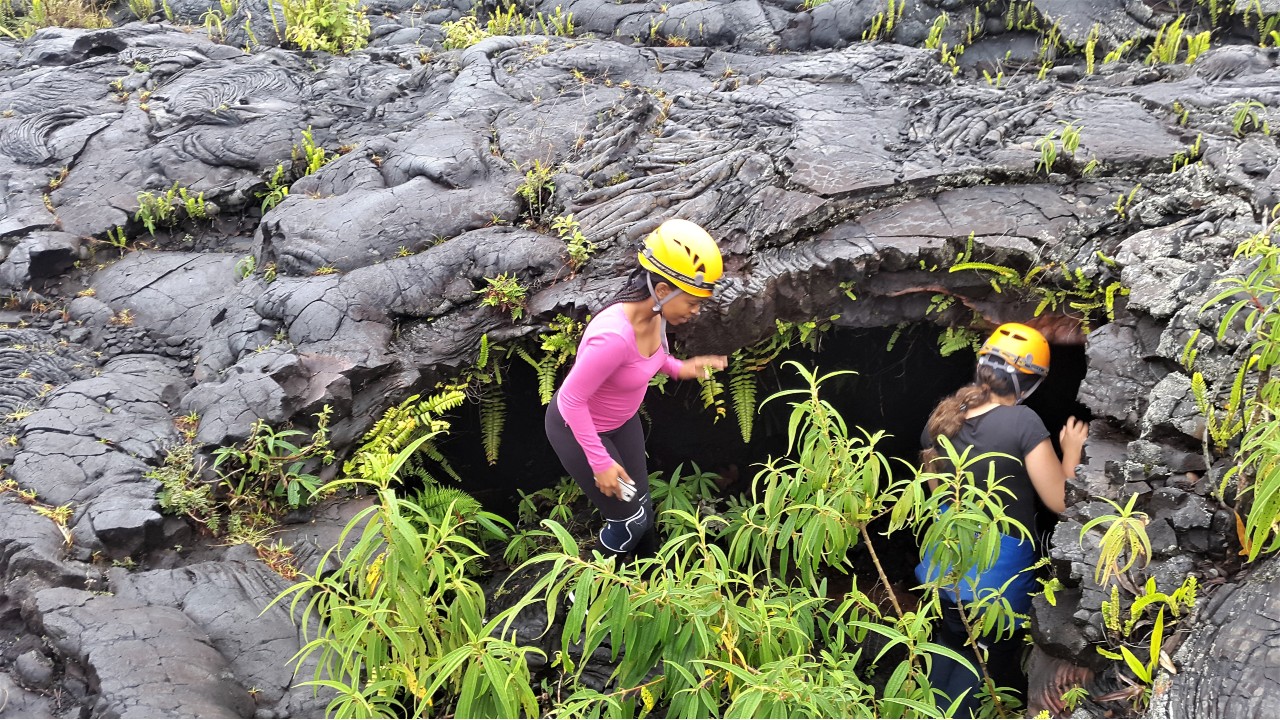
For an ‘up close and personal’ volcanic experience there’s nothing better than heading underground through the lava tunnels. We met our Ricaric guide alongside the Route des laves and before long we were geared up with knee guards, helmet, and headlamp.
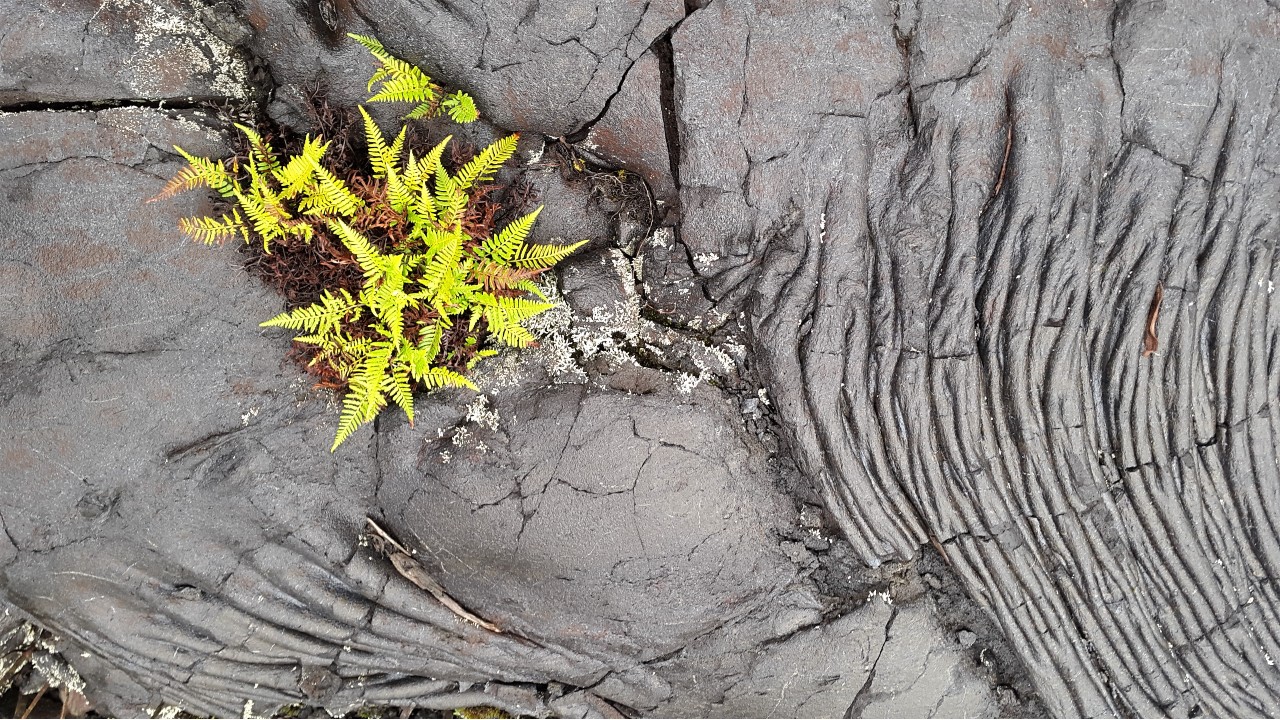
We were exploring the tunnels created by the lava flow of 2001 – clambering over the black folds of lava rock and marveling at resilience of nature where new growth sprouts between the folds and where lichen and ferns begin to take hold.

Soon it is time for our descent into the underworld through a nondescript opening.
Another world greeted us.
Shadows danced across the shimmering tunnel walls in the light of our guide’s ‘naked flame’. We were walking through tubes created by ribbons of molten lava, our guide, a trained speleologist, explained that the lava stalactites were formed while the lava was still active, and if broken would never repair themselves. He pointed out where a tree, caught up in the lava flow, had burned away leaving a cavity. ‘I should have taken those gloves’ went through my mind as we crawled through a narrow section towards the exit – thank goodness I had packed plasters in my first aid kit. It’s hot and slightly oppressive, but so very worth it!
5 Visit Notre-Dame des Laves in Sainte Rose
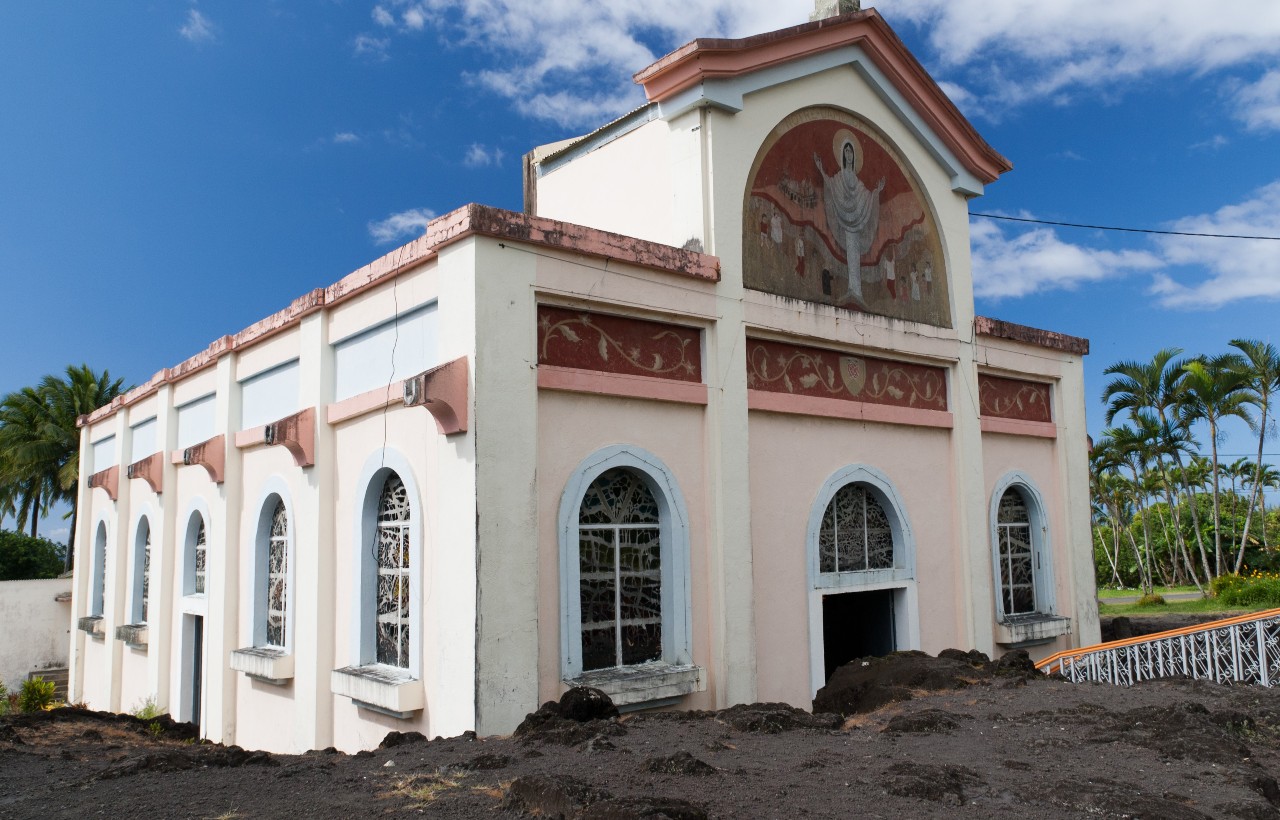
This eastern side of the island has had a number of encounters with le volcan over the years, some like those of the 2001 and 2007 eruptions that cross the N2 highway and flow into the sea, others like the eruption in 1977 posed a slightly greater threat. On this occasion the lava flowed into the village of Sainte Rose, destroying several buildings, and surrounding the local church – it stopped, miraculously some say, at the door of the church that is now called Notre-Dame des Laves (Our Lady of the Lavas).
Words – Tessa Buhrmann / Images – Tessa Buhrmann, Ekrem Canli

